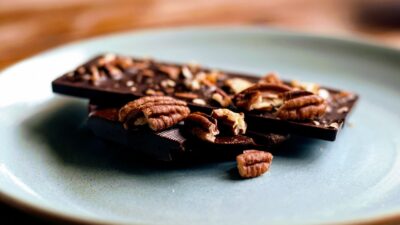In recent years, the gluten-free movement has surged in popularity, driven by increasing awareness of gluten sensitivities, celiac disease, and a general shift toward healthier eating habits. This revolution is not just about eliminating gluten; it’s also about embracing a diverse array of grains that offer unique flavors, textures, and nutritional benefits. As more people explore gluten-free options, it’s essential to understand which grains to keep stocked in your pantry for a vibrant, gluten-free lifestyle.
Understanding Gluten and Its Alternatives
Gluten is a protein found in wheat, barley, and rye, which can cause adverse reactions in sensitive individuals. The good news is that many grains are naturally gluten-free and can provide sustenance without the associated risks. In the realm of gluten-free grains, the options are plentiful and exciting, each offering distinct culinary possibilities.
1. Quinoa
Often hailed as a superfood, quinoa is a complete protein, containing all nine essential amino acids. Its nutty flavor and fluffy texture make it a versatile ingredient, suitable for salads, bowls, and even breakfast porridge. Quinoa is also rich in fiber, vitamins, and minerals, making it an excellent addition to any diet.
Top Tip: Rinse quinoa before cooking to remove its natural coating, saponin, which can impart a bitter flavor.
2. Brown Rice
As a staple in many cuisines worldwide, brown rice offers a gluten-free alternative to wheat-based products. Unlike white rice, brown rice retains its bran and germ, resulting in a higher fiber and nutrient content. It serves as a hearty base for stir-fries, curries, or grain bowls.
Top Tip: Soak brown rice before cooking to significantly reduce cooking time and improve digestibility.
3. Buckwheat
Despite its name, buckwheat is not a grain but rather a seed that is related to rhubarb. It is rich in antioxidants and minerals like magnesium and phosphorus. Buckwheat flour can be used to make pancakes, noodles (soba), and bread, providing a rich, earthy flavor.
Top Tip: Make a savory buckwheat porridge by cooking it in vegetable broth and adding your favorite vegetables.
4. Millet
Millet is a tiny, versatile grain with a slightly sweet flavor, often used in both sweet and savory dishes. It is gluten-free, nutrient-dense, and an excellent source of magnesium, making it a fantastic choice for promoting heart health. Millet can be prepared like rice or cooked into a creamy porridge.
Top Tip: Toast millet in a dry skillet before cooking to enhance its nutty flavor.
5. Amaranth
Another ancient grain, amaranth is rich in protein, fiber, and essential nutrients like iron and calcium. Its slightly peppery flavor and creamy texture when cooked make it an excellent addition to soups, stews, or as a side dish.
Top Tip: Combine amaranth with other gluten-free grains to create a hearty pilaf.
6. Teff
A staple in Ethiopian cuisine, teff is the smallest grain in the world and packs a powerful nutritional punch. It is high in protein, iron, calcium, and other minerals. Teff flour is commonly used to make injera, a sourdough flatbread that serves as a base for many dishes.
Top Tip: Use teff flour in gluten-free baking to enhance flavor and boost nutritional content.
7. Oats
While oats are naturally gluten-free, they are often processed in facilities that handle gluten-containing grains, leading to potential cross-contamination. Look for certified gluten-free oats to ensure safety. Oats are rich in beta-glucans, which can help lower cholesterol levels. They are perfect for breakfast, baking, or adding to smoothies.
Top Tip: Use oat flour in gluten-free baking for added texture and nutrition.
Embracing Diversity in Your Pantry
Incorporating these gluten-free grains into your diet not only enhances your meals but also fosters culinary creativity. From hearty breakfast bowls to innovative gluten-free baked goods, the possibilities are endless.
Storage Tips: To maintain freshness, store grains in airtight containers in a cool, dark place. Most gluten-free grains have a longer shelf life, but it’s always a good idea to check for any signs of spoilage.
Conclusion
The gluten-free grain revolution is empowering individuals to explore new flavors and improve their health through diverse dietary choices. By stocking your pantry with these top gluten-free grains, you’re not only supporting your well-being but also expanding your culinary horizons. Whether you’re entirely gluten-free or looking to reduce gluten in your diet, the world of grains is waiting to be discovered. Embrace the adventure and enjoy the myriad benefits that gluten-free grains have to offer!



